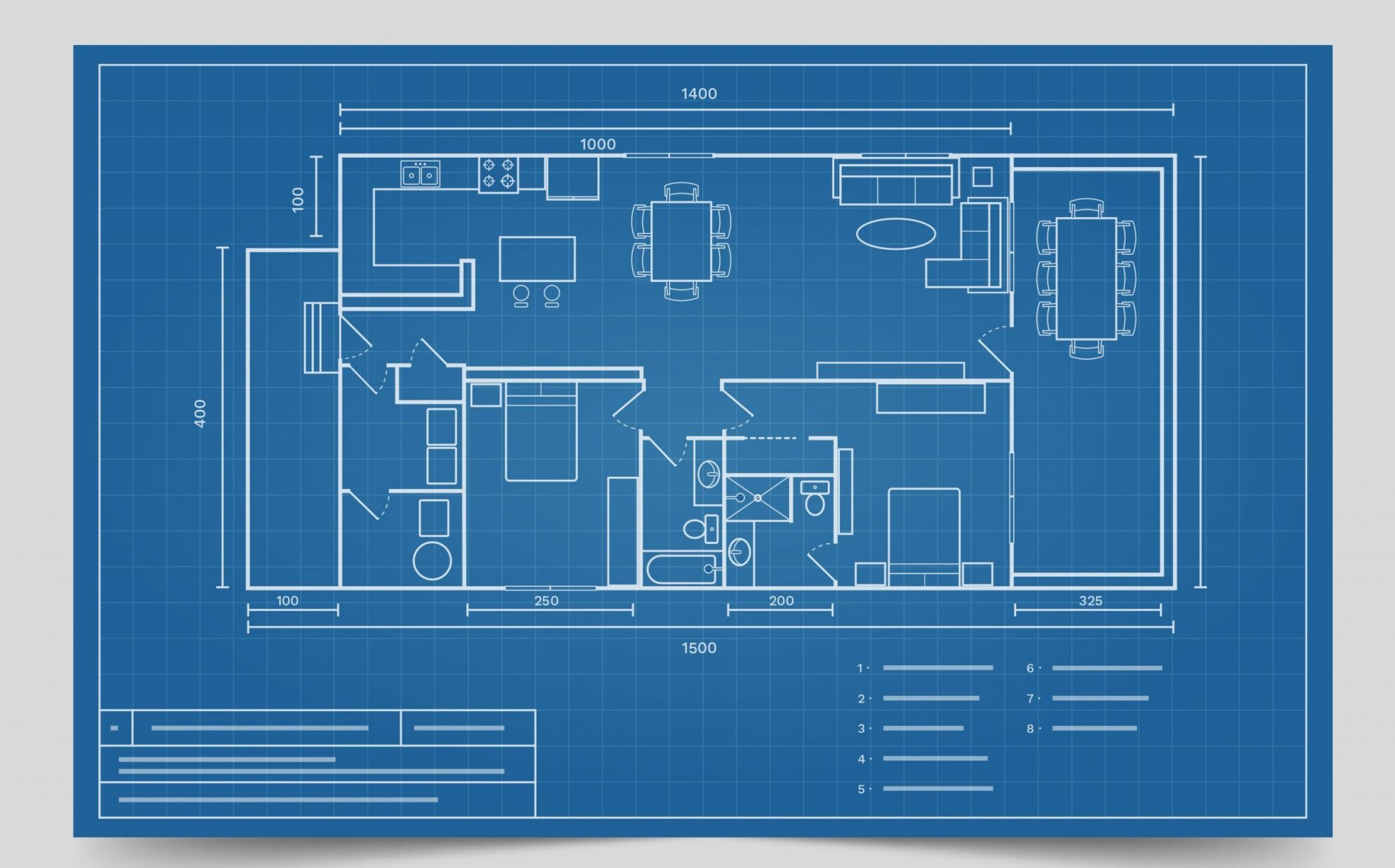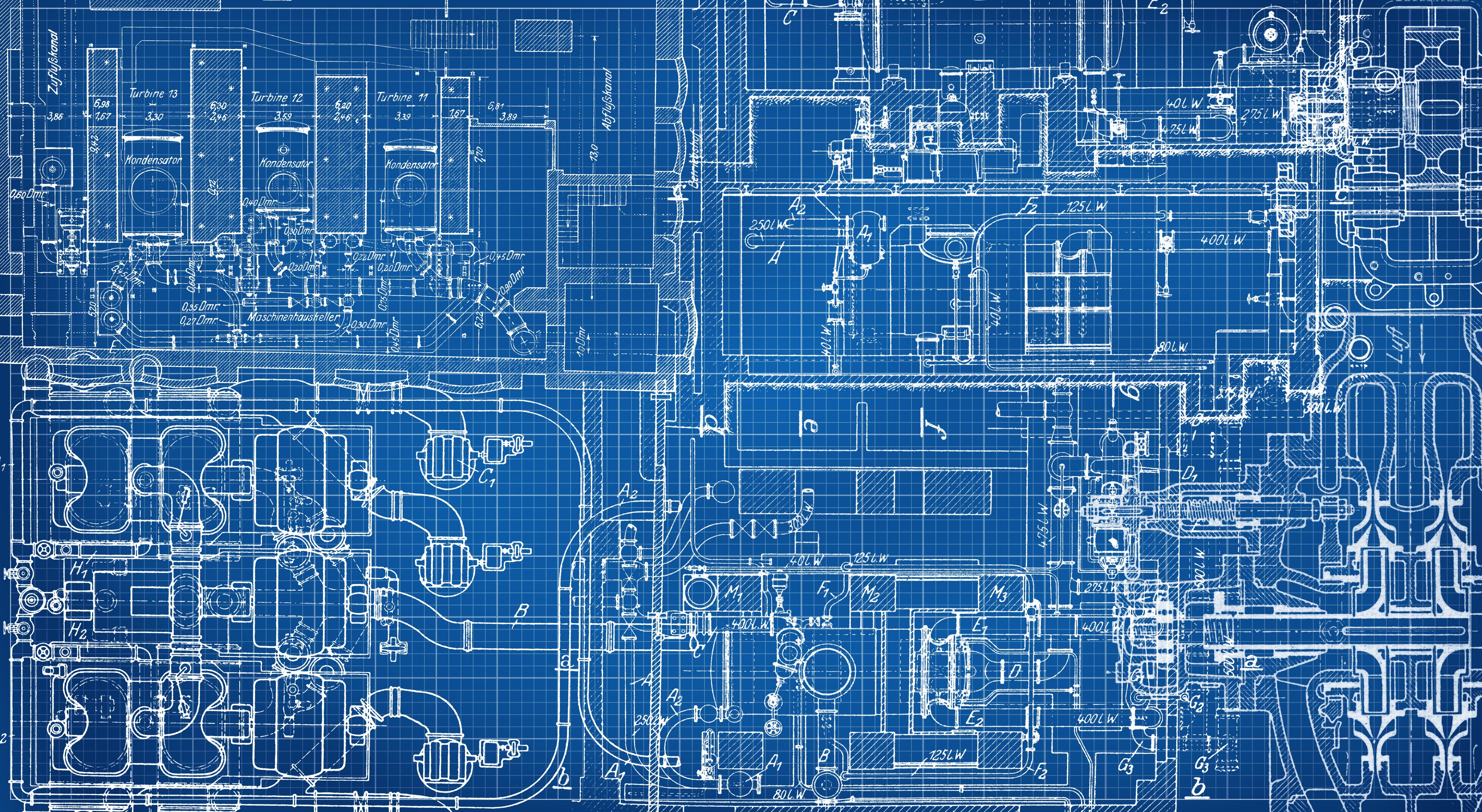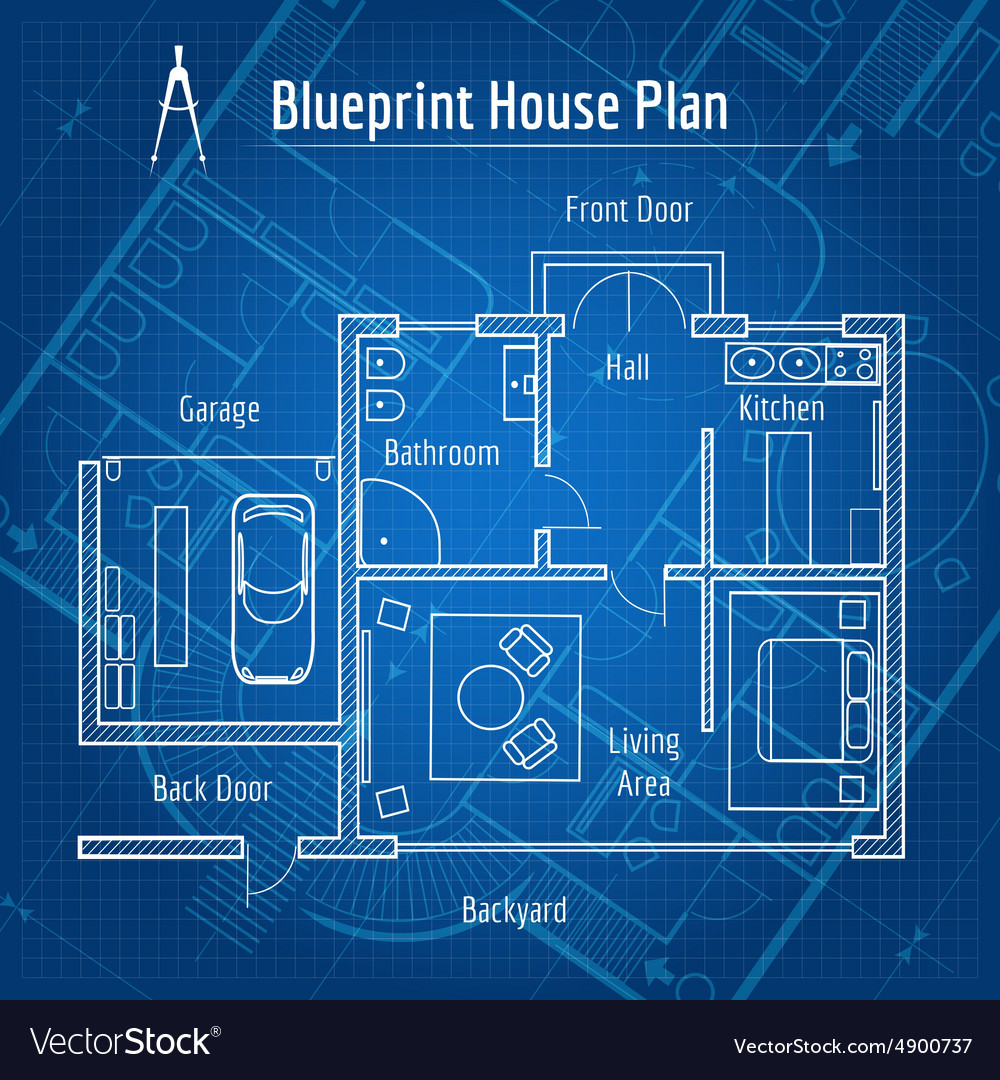Blueprint Blueprint Blueprint - Your Project's Visual Guide
Have you ever thought about how big projects, like putting up a new building or even just rearranging your living room, actually get started? It's not just a bunch of people showing up with tools and hoping for the best, you know. There's always a guiding picture, a sort of master plan that everyone looks at to make sure they're all working on the same thing. This foundational drawing, this clear picture of what's coming, is what we often call a blueprint.
It's really about having a solid idea of what you want to build or create before you even pick up a hammer or move a piece of furniture. A good plan helps everyone involved see what the finished product should look like, how big it will be, and where everything should go. It's pretty much the instruction book for making something happen, whether it's a small room redo or a huge new building.
So, when we talk about a blueprint, we're talking about that first, very important step where ideas turn into something you can actually see and follow. It helps avoid confusion and makes sure that everyone is on the same page, working towards the same goal. It's a way to get your thoughts organized and ready for action, honestly.
- What Is A Wardkeeper In Prison
- The Fanbus Tv Cast
- Ali Krieger Jersey
- Jason Weaver Wife
- Does Aoc Have A Life Partner
Table of Contents
- What is a blueprint blueprint blueprint anyway?
- How do people make a blueprint blueprint blueprint?
- Why bother with a blueprint blueprint blueprint?
- What does a blueprint blueprint blueprint show you?
What is a blueprint blueprint blueprint anyway?
When you hear the word "blueprint," you might first think of those old-fashioned, blue-tinted drawings of buildings. And, you know, you'd be right in a way. Historically, a blueprint was a special kind of picture, usually white lines on a bright blue background, or the other way around, used to copy things like maps or drawings for buildings and machines. It was a photographic way to get a copy of an early plan. But the idea behind it is much bigger than just a blue piece of paper, as a matter of fact.
A blueprint, at its core, is a really detailed plan or a kind of design that helps guide you through putting a project together. This could be for building something, engineering a new gadget, or even making something in a factory. It gives you a picture of what the project needs, how big everything should be, and all the little specific details. It's essentially the rulebook for how something should be made or put together, so everyone knows what's what.
So, when someone talks about a blueprint, they're referring to a very clear and precise guide. It's the visual representation of all the requirements and measurements for a particular endeavor. It's like having a map that shows you every turn and every landmark you need to hit to get to your destination successfully. This means, really, that it is a fundamental piece of any project that requires careful planning and execution.
- Best Shoes For Flat Feet Men
- Courtney Wilson
- Where Does Belle Delphine Live
- Gene Wilder Spouse
- Hannah Ricketts Day Job
Making a project plan come to life
Think about building a house. You wouldn't just start laying bricks, would you? You'd need to know where the walls go, how many rooms there are, and where the windows and doors should be placed. That's where a blueprint comes in. It's the very backbone, you know, of any building or fixing-up job. These are special drawings that show how a building is supposed to look, its measurements, and other important bits. They are, in essence, the complete picture of the architect's thoughts for the structure.
Having a good grasp of what these drawings mean is pretty important for anyone who is getting into building work, fixing up a place, or even just a small business owner who needs to organize their space. It helps you see the whole idea before you start spending money or time. It's almost like having X-ray vision for your project, allowing you to see inside and understand how everything fits together before it's even built. This way, you can spot potential problems or make changes on paper, which is a lot easier and cheaper than doing it after things are already built, actually.
The original text mentions "My text" as a way to refer to the content being worked with, and in a way, the process of creating a blueprint is very similar to how we might organize our thoughts for writing something. You gather all the pieces, decide where they fit, and then put them down in a way that makes sense to others. This careful planning stage is what makes a project go from just an idea to something real and useful. It's about setting up a clear path for everyone involved to follow, so there are no surprises later on.
How do people make a blueprint blueprint blueprint?
Making these kinds of detailed plans, or what we call blueprints, has changed a lot over time. You can still draw them by hand, of course, if you like the feel of pencil on paper. But these days, a lot of people use computer programs to help them out. There are quite a few software tools out there that let you create room layouts, building plans, and other designs in just a few minutes. They often come with ready-made patterns or shapes, so you can just pick and choose what you need. It's pretty much like having a digital drawing board with all the tools you could ever want at your fingertips.
Some programs are really easy to use, letting you put together amazing spaces without needing to be an expert in complicated drawing software. You can design stunning rooms with online tools that offer editable patterns and lots of space to draw. These kinds of tools are a big help for anyone who wants to get their ideas down quickly and clearly. They are, in a way, democratizing the process of design, making it open to more people than ever before. This is especially true for those who might not have had formal training in technical drawing.
There are even free blueprint software options available that make creating floor plans really simple. You can design your space and see it come to life with easy-to-use tools, then export your creation as a flat drawing or even a three-dimensional picture. You can get started with these programs today, which is pretty cool. It means that whether you're drawing by hand or using a computer, the steps to make your own plan are clear and easy to follow. This walk-through of making your own blueprint will guide you through the detailed steps of how to draw floor plans for your new home design, for instance.
Getting your ideas down
When you're ready to put your ideas onto paper, or rather, onto the screen, the first thing to do is pick a scale. This means deciding how big things on your drawing will be compared to real life. Then, you draw or create the outside walls, the doors, and the windows. After that, you add the inside walls and doors, and then you label each space, like "kitchen" or "bedroom." Finally, you put in little symbols for things like ovens, sinks, and light sockets. It's a bit like building a miniature version of your project first, just with lines and shapes.
You can find lots of existing plans to look at for ideas as you start to picture your own design. This can be a great way to get your creative juices flowing and see what's possible. There are places where you can look at over 40,000 house plans, room layouts, and building drawings to help you build the home you've always dreamed of. Some places even offer custom layouts and reports on how much things might cost to build, which is really helpful, you know.
Many people from all over the world use these kinds of tools to make professional layouts without needing special computer-aided design skills. It just goes to show that you don't need to be an architect to create a really good plan for your project. You just need the right tools and a clear idea of what you want to achieve. It's about making the process accessible and straightforward for anyone who has a vision for a space or a structure. You just try it free now, for example, and see how simple it can be.
Why bother with a blueprint blueprint blueprint?
So, why go through all the trouble of making a blueprint? Well, for one thing, it can save you a lot of time and money. When you have a clear plan, you know, things just tend to go more smoothly. It means you spend less time guessing or fixing mistakes later on, which can actually save you quite a bit of cash. And for folks who are selling something, like a house or a project idea, having a clear picture to show can help them seal the deal a lot quicker. It's really about making the whole process simpler and more efficient for everyone involved, basically.
Having a detailed plan helps you avoid misunderstandings. Everyone involved in the project, from the person doing the drawing to the people doing the building, can look at the same document and know exactly what needs to happen. This reduces errors and makes sure that the final product is exactly what was intended. It's like having a universal language for your project, where everyone speaks the same terms and follows the same instructions. This can prevent costly reworks and delays, which nobody wants, really.
A blueprint also acts as a guide for decision-making. If you're trying to figure out where to put a window or how big a room should be, the plan helps you see the impact of those choices. It provides a framework for discussions and adjustments before any physical work begins. This means you can make changes on paper, which is a lot easier and cheaper than making them after the walls are up. It gives you a chance to think through everything before you commit, which is pretty smart, in a way.
Keeping things straight and simple
On the surface, the word "blueprint" might seem like it's only about health, feeling good, and getting older. But it's actually much more than that. It's really a system designed to make tomorrow better for you, for me, for the planet, and for our shared future, especially with new technologies like artificial intelligence coming into play. It’s a way to plan for a better future, not just a building. It's about creating a clear path forward for any kind of development or improvement, honestly.
In the world of managing projects, a blueprint is a very detailed plan or design that spells out what the project is about, what it aims to achieve, what resources it needs, and how long it will take. It’s like a comprehensive roadmap that helps keep everyone on track and focused on the main goals. It helps to keep things straight and simple by providing a single source of truth for the project, so there's no confusion about what needs to be done or when.
So, whether you're picking out a floor plan to build a home, or looking for customizable house plans in different sizes and styles, having a blueprint helps. It helps you see what's possible and what fits your needs. Blueprints.com, for instance, offers tons of these kinds of plans. It’s about having a clear vision that guides every step, making sure that your dream home or project comes to life just as you pictured it. It's pretty much a way to make sure that everything aligns with your initial vision, right from the start.
What does a blueprint blueprint blueprint show you?
A blueprint is more than just a picture; it’s a collection of symbols and lines that tell a story about a building or a product. It shows you the size of rooms, where windows and doors are placed, and even where electrical outlets or plumbing pipes will go. It’s a way of communicating complex information in a simple, visual format. This means that anyone who knows how to read these drawings can get a pretty good idea of what the finished thing will look like, and how it will function.
For instance, a complete guide about blueprints can teach you everything about them. This includes what the term means, the different kinds of blueprints there are, what all the symbols stand for, and even examples of how they’re used. It also tells you how to make one using specific software. This kind of information is super helpful for anyone who wants to get a full grasp of these important documents. It's really about giving you the tools to understand the language of design and construction, you know.
Learning how to read these plans is a skill that can be really useful, even if you’re not an architect or a builder. It helps you visualize spaces and understand how different parts of a project fit together. Once you know how to read them, you can look at existing blueprints for ideas and inspiration as you start to picture your own design. This can spark new ideas and help you make better decisions for your own projects. It’s like being able to read a secret code that unlocks a lot of information about how things are put together, actually.
Seeing the whole picture
The meaning of the word "blueprint" itself comes from its history as a photographic print, usually white on a bright blue background, or blue on a white background. These were used especially for making copies of maps, mechanical drawings, and plans made by people who design buildings. So, the word literally describes how these early copies looked. But over time, the meaning has grown to describe any detailed plan or design, regardless of its color or how it was made.
A blueprint in its modern sense is a very detailed plan or a design that works as a guide for building, engineering, or making a project. It gives you a visual way to see all the project’s needs, its sizes, and all the specific details. It helps you see the entire picture, from the biggest parts down to the smallest screws. It’s a way to make sure that everyone involved in the project has the same clear image of what they are working towards, which is pretty important.
So, whether you are trying to figure out how to draw room layouts by hand or with home design software, this make-your-own blueprint lesson will guide you through the detailed steps. This process can be followed by those drawing their plans by hand or using computer programs. It’s all about creating that clear, visual representation that serves as the foundation for any successful creation, big or small. It helps everyone involved to be on the same page, ensuring that the final result matches the initial vision as closely as possible.
- Incest Confessions
- Tony Green Net Worth
- Alan Ruck Movies And Tv Shows
- Leejong Suk
- Elizabeth Taylor Grandchildren

Technical Drawing vs Blueprint: What Is the Difference? – Darnell

Blueprints Blueprint Styles Hassified Graphicriver Printable Paper

House Construction Blueprints